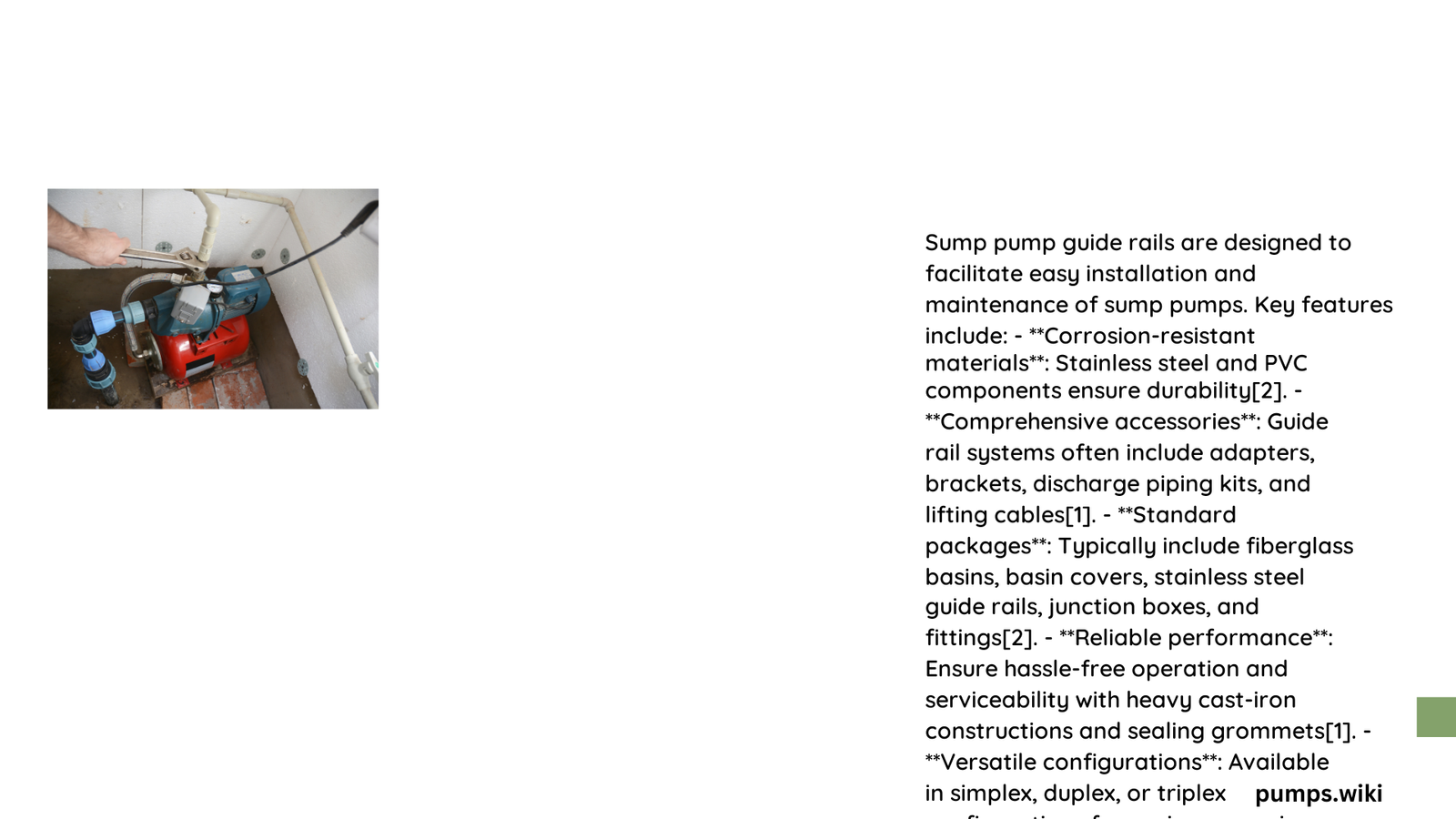Sump pump guide rails are critical components that ensure precise vertical movement and alignment of submersible pumps within sump pits. These specialized rails provide structural support, prevent pump misalignment, and facilitate smooth vertical travel during water extraction. Proper selection, installation, and maintenance of sump pump guide rails can significantly enhance pump efficiency, reduce mechanical stress, and extend the overall lifespan of your drainage system.
What Are Sump Pump Guide Rails?
Sump pump guide rails are vertical metal tracks designed to guide and stabilize submersible pumps within a sump pit. These precision-engineered components ensure that pumps move vertically without lateral movement, preventing potential damage and maintaining optimal performance.
What Materials Are Commonly Used?
| Material | Corrosion Resistance | Cost | Durability |
|---|---|---|---|
| Galvanized Steel | Moderate | Low | Good |
| Stainless Steel | High | High | Excellent |
How to Select the Right Sump Pump Guide Rails?

When selecting sump pump guide rails, consider these critical factors:
- Pit Dimensions: Measure your sump pit’s depth and width
- Pump Weight: Ensure rails can support your specific pump model
- Corrosion Environment: Choose materials resistant to your basement’s moisture levels
What Are the Installation Steps?
Preparation Phase
- Gather necessary tools:
- Measuring tape
- Drill
- Level
- Mounting hardware
- Guide rail kit
Mounting Process
- Clean the sump pit thoroughly
- Mark precise mounting locations
- Install guide rail holders securely
- Attach guide rails vertically
- Ensure perfect alignment
How to Maintain Sump Pump Guide Rails?
Regular maintenance prevents premature wear and ensures optimal performance:
- Quarterly Inspections:
- Check for rust or corrosion
- Verify mounting hardware tightness
- Lubricate moving components
-
Test pump’s vertical movement
-
Annual Deep Maintenance:
- Remove pump and thoroughly clean rails
- Inspect for structural integrity
- Replace worn components
- Apply protective coatings if needed
What Common Problems Should You Watch?
Potential Issues
- Misalignment
- Corrosion
- Loose mounting hardware
- Debris accumulation
- Mechanical wear
Troubleshooting Tips
- Use stainless steel for high-moisture environments
- Install intermediate supports for longer rails
- Apply anti-corrosion treatments
- Regularly clean and inspect
Professional Recommendations
- Always follow manufacturer specifications
- Consider professional installation for complex setups
- Invest in high-quality materials
- Perform consistent preventative maintenance
Technical Specifications to Consider
- Load Capacity: Minimum 1.5x pump weight
- Material Thickness: 14-16 gauge recommended
- Corrosion Rating: ASTM A53 or higher
- Installation Angle: 90-degree vertical alignment
Cost Considerations
| Quality Level | Estimated Cost Range |
|---|---|
| Basic | $50 – $150 |
| Mid-Range | $150 – $300 |
| Professional Grade | $300 – $600 |
Final Thoughts
Sump pump guide rails are more than simple metal tracks—they’re critical infrastructure protecting your basement from water damage. Proper selection, installation, and maintenance can prevent costly water-related issues and ensure reliable pump performance for years.
